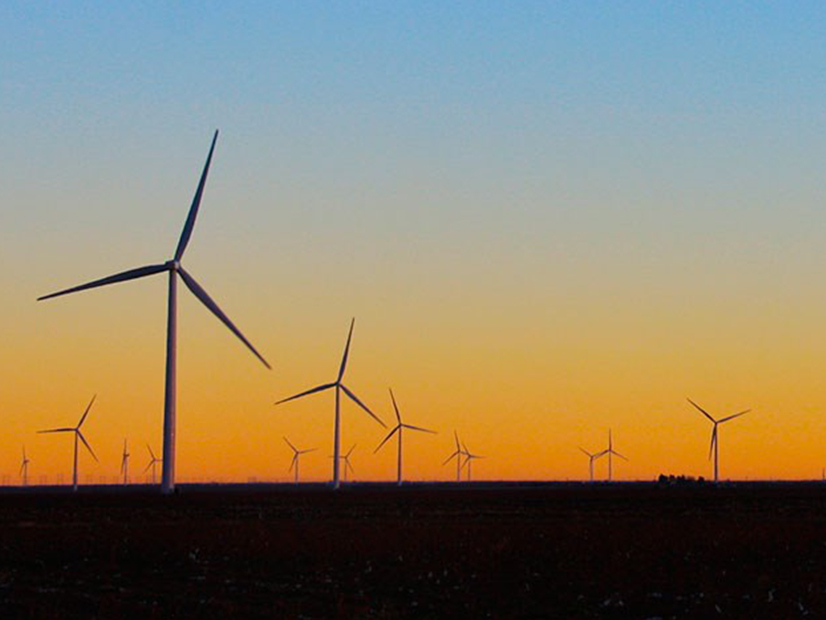The Department of Energy’s Building a Better Grid initiative has been warmly received by those within the industry who see prioritizing national transmission solutions as integral to adding more renewable resources to the grid.
They include Phillip Moeller, executive vice president at Edison Electric Institute, which represents investor-owned utilities.
“Transmission is going to be the key to unlocking those resources that are cleaner but generally far, far away from where the load centers are,” he said during a recent United States Energy Association virtual webinar on the DOE program. “We’re encouraged that there’s more talk about transmission in Washington, with the bipartisan infrastructure bill … not only setting the policies in place that will allow for better planning and ideally more construction, but also figuring out the economic side and giving some clarity to the return on these investments.”
Under Building a Better Grid, DOE will work to identify high-priority national transmission solutions capable of relieving congestion and accommodating more clean-energy resources. The department launched the program last month following the enactment of the Infrastructure Investment and Jobs Act that contained billions of dollars for grid infrastructure and expanded federal siting authorities. (See DOE to Tackle Tx Siting, Financing, Permitting in Better Grid Initiative.)
The department says the nation’s grid will need to expand by 60% by 2030 and by three times its size by 2050, if President Biden’s goals of a decarbonized grid by 2035 and a net-zero economy by 2050 are to be met. It says large renewable projects in remote areas and offshore wind will need high-voltage transmission lines to efficiently bring power to urban demand centers.
However, DOE has determined about 70% of the nation’s existing transmission lines and transformers are more than 25 years old. According to a 2021 study from the Lawrence Berkeley National Laboratory, more than 750 GW of solar and wind and 200 GW of storage were backed up in grid operators’ interconnection queues at the end of 2020.
Tri-State Generation and Transmission Association CEO Duane Highley, speaking on the same panel with Moeller, said his organization is looking forward to working with DOE. Calling his cooperative a “poorly named company” because it serves four states in its 200,000-square-mile footprint through its member systems, Highley said “transmission is extremely important for us as we’re making our energy transition.”
Based in Colorado, Tri-State intends to meet the state’s 80% decarbonization mandate by 2030.
“In order to do that, many gigawatts of wind and solar have to be moving across time zones in order to balance everything else,” Highley said.
Fortunately for Tri-State, it’s a member of SPP in the Eastern Interconnection, and it has plans to also join SPP’s Western expansion, RTO West. The grid operator has facilitated the construction of more than $10 billion of new infrastructure, much of it to interconnect wind farms on the plains of Nebraska, Kansas and Oklahoma.
SPP COO Lanny Nickell joined Highley on the panel to share the RTO’s experiences that he thought would be helpful to DOE’s initiative. He said the RTO owes much of its success to an agreement reached more than 10 years ago with its footprint’s state regulators to share transmission upgrade costs.
The result? Nickell said wind generation has grown from providing 6% of SPP’s annual energy needs to now providing 35% on an annual basis, helping reduce carbon dioxide emissions by more than 29% over the last seven years. He referenced a transmission-value study that indicates new transmission installed since 2015 has provided $5.24 of benefits for every $1 invested. (See “JTIQ, Tx Value Staff Reports,” SPP Markets and Operations Policy Committee Briefs: Jan. 10-11, 2022.)
Nickell said SPP relied on the transmission infrastructure to import up to 14% of its energy during last February’s severe winter storm.
“Our situation would have been much more catastrophic had it not been for the strength of our system and our connections with neighboring systems,” he said. “Extreme weather events are happening much more frequently, and a more resilient system is going to be needed to prepare for future events. Utilities and developers continue to request more renewable resources to add to their portfolios. More transmission is needed to meet these goals reliably and affordably.”
That includes more DC ties between the Eastern and Western Interconnections. Seven of the eight back-to-back DC ties in the U.S. and Canada link SPP with the Western Interconnection, but they only provide 1,320 MW of capacity.
Nickell used an analogy of two neighboring swimming pools linked by a common garden hose to highlight the ties’ limitations.
“Very limited, basic capacity. They’re garden hoses. They’re small,” he said. “That’s what limits us from really obtaining the value and the benefit [of interconnections]. That’s what needs to be considered in terms of really unlocking the system’s value.”
“The need to tie the grid together east to west is directly tied to the DOE proposal because you get a federal entity that could study and bring together private companies to help build and construct this network,” Highley said. “What we really need is to move that solar east and west across time zones. [Building a Better Grid] is going to resolve a lot of our issues with integrating renewables into the grid.”
Asked where new east-west transmission should be built, Nickell said SPP has yet to conduct studies for that but said he would definitely like to see more infrastructure along the Eastern Interconnection’s western footprint.
“We’ve been referred to as the Saudi Arabia of wind. We’ve got a lot of wind potential that we could deliver both east and west,” he said. “A lot of the solar potential, though, exists in the West. Wouldn’t it be great if we could swap those out? We can benefit from solar when the wind’s not blowing and from wind when the sun’s not shining.”



